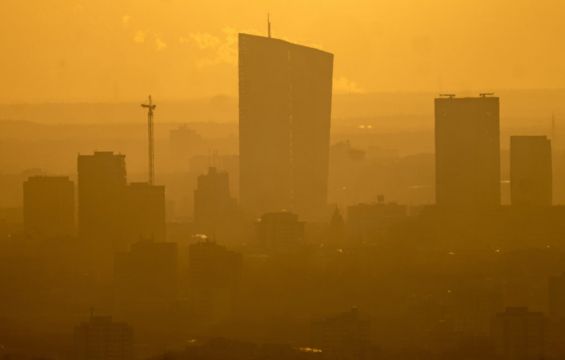The inflation rate in countries that use the euro dipped at the start of the year, giving some relief to consumers but still leaving them facing higher prices, figures show.
The consumer price index for the 20 countries that use the currency fell to 8.5% in January from a year earlier, European Union statistics agency Eurostat reported.
That is after annual inflation hit 9.2% in December.
It is the first report on consumer prices that includes data from Croatia, which joined the eurozone on January 1.
Inflation in Europe has now slowed for the third month in a row, falling from a record high of 10.6% in October.
Food and energy prices, which have been major factors driving up European inflation, kept fuelling the higher cost of living.
Croatia joined the euro area on 1 January 2023. What did people, businesses and national authorities do to ensure a smooth transition?
Host @KatieRanger_ looks at the currency changeover with expert Patricia Roa Tejero on #TheECBPodcast.
Tune in https://t.co/yCdt3Qdyi6 pic.twitter.com/FqSvIZbaBe— European Central Bank (@ecb) January 28, 2023
Natural gas prices have fallen from all-time highs last summer thanks to a scramble to find supplies outside Russia and mild winter weather that took the pressure off energy demand for heating.
Russia’s war in Ukraine has shaken up food and energy markets, and while commodity prices have fallen from all-time highs last year, consumers are not yet seeing relief on their utility and grocery bills.
The energy upheaval has made the cost-of-living squeeze more painful in continental Europe and the UK than in the US, leading to protests and strikes from workers in several countries who are seeking pay that keeps pace with inflation.
Prices for food, alcohol and tobacco rose at a 14.1% annual pace, while energy prices rose 17.2%.
So-called core inflation, which does not include volatile food and energy costs, held steady at 5.2% last month, underlining how prices also are rising for both services and goods such as clothing, appliances, cars and computers.
Surging inflation has weighed on Europe’s economy, which saw 0.1% growth in the final three months of last year and 3.5% for all of 2022. That actually outpaced the 2.1% expansion in the US and China’s 3% growth last year.
But with inflation far above a target of 2%, the European Central Bank will keep hiking interest rates that make it more expensive for consumers to borrow money.
Aiming to get price spikes under control, the central bank is expected to hike rates by a half-point on Thursday.







